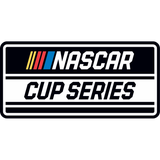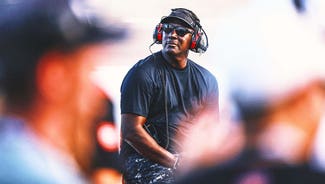
When is the rain too much? Circuit of the Americas raises the debate
By Bob Pockrass
FOX Sports NASCAR Writer
AUSTIN, Texas – The verdict on NASCAR racing at Circuit of the Americas is incomplete — much like the race was.
NASCAR had to prematurely end its inaugural 68-lap NASCAR Cup Series race on the 3.41-mile road course after 54 laps because of heavy rains. It was a frustrating finish – for all except the Chase Elliott fans who celebrated his victory – to a weekend when only one of the three national series races was conducted in dry conditions.
Instead of evaluating the first NASCAR event at COTA, a track designed to play host to a Formula 1 race, and whether NASCAR could match it in atmosphere, the focus centered on the weather and how to determine when rain is too much for NASCAR to continue an event.
Sunday marked the second time in a year – last year’s Xfinity race at the Charlotte road course was plagued by rain – that NASCAR pretty much admitted it did not stop the race because of treacherous conditions early enough.
Kevin Harvick fumed after his accident caused by drivers being unable to see Sunday, saying that NASCAR has no business racing in the rain.
"It’s the most unsafe thing I’ve ever done in a race car by a lot," Harvick said. "You can’t see anything down the straightaways.
"These cars were not built to run in the rain, and when you can’t see, my spotter said, ‘Check up, check up’ because he thought he saw two cars wrecking. I let off, and the guy behind me hit me wide-open because he never saw me."
With four of the next 10 races on road courses, NASCAR could face this situation again. Road America, where NASCAR will race July 4 weekend, has a long straightaway that has the potential to be as treacherous as the one at COTA.
"They have a super long back straightaway with a kink in it. That is going to be even worse than this one was," Kyle Busch said of Road America. "There’s definitely times where conditions are treacherous, and we need to be smart about it."
As Busch said, "We’re trying to put on a show for the fans, right?"
That’s the challenge for NASCAR. If it can give the fans a show without postponing the event, the sanctioning body obviously wants that. But it can’t be racing in unsafe conditions, and it took too long in the race Sunday.
After the red flag flew following a couple of bad accidents, NASCAR went to single-file restarts when it resumed to limit the spray created when drivers were side-by-side on restarts under normal procedure.
It wasn’t a surprise to anyone that the drivers couldn’t see; they complained about it a day earlier after practice. But in practice, not all 40 cars were on the track at the same time, and they weren't as bunched together.
NASCAR Senior Vice President Scott Miller said the sanctioning body will look at super high-resolution footage of the spray to determine if a flap or another piece could be added to decrease the spray.
"It’s a learning experience for all of us," Miller said. "We will learn. We will be better next time. ... Would we pull the plug earlier? Probably so."
Looking for more NASCAR content? Sign up for the FOX Sports NASCAR Newsletter with Bob Pockrass!
AJ Allmendinger, who has extensive road-racing experience, said the spray is not quite as bad in a sports car. He has competed in several events in the rain, including the Rolex 24 at Daytona, which has had red flags because of downpours.
He finished fifth amid the chaos Sunday.
"You look at the 2019 Rolex. I was, like, four cars in line on a restart, and you’re driving blind, hoping that there’s nothing there when you get there," Allmendinger said. "It’s a part of racing, and I don’t know what the solution [is] to why NASCAR vehicles are so much worse when it comes to that.
"Some of it is because the windows are so big, they get foggy, and it is hard to see out of them as well. It’s a challenge."
As it happened, Joey Logano was leaving Texas to go to Richmond Raceway, where NASCAR planned to conduct a tire test to potentially be able to run on a damp surface (not in the rain, but afterward) on flat, short tracks.
"The biggest thing is just trying to understand the spray," Logano said. "That’s what we’ve got to fix. I’m going to Richmond to work on a rain test. Maybe they’ll bring some mud flaps or something to put the spray down.
"Honestly, I think you’ve got to do something like that. I know that sounds goofy, and it sounds like a joke, but I honestly think you’ve got to do something to get the spray down to where we can see where we’re going."
The car NASCAR will start using next year has a rear diffuser below the rear bumper that is designed to improve aerodynamics. While it is a big piece, there was no consensus on whether it could have an impact on the spray.
Packing 40 cars that weigh 3,400 pounds together in a short distance will keep up a lot of water in any condition. Plus, NASCAR would have to determine if a rain flap behind tires would create any new problems.
"We just run really, really close together -- closer for longer periods of time than most other series do," Elliott crew chief Alan Gustafson said. "That definitely makes it more difficult. ... Knowing you're going that fast, visibility is 30 feet in front of you, it's just a bad combination.
"It's a difficult thing to do. I don't necessarily see the Next Gen car making a huge change when it comes to visibility in that situation."
As team owner Rick Hendrick said, he wouldn’t want to be in NASCAR’s position, having to make the judgment call of when to stop a race. NASCAR teams and drivers are used to putting their safety in the hands of NASCAR officials.
"There's honestly nothing safe about being a race car driver," second-place finisher Kyle Larson said.
But that doesn’t mean NASCAR shouldn’t be questioned. Discussions should continue. There are too many road courses coming up to have a wait-and-see attitude.
"Hindsight, you can say when the cars start hydroplaning, you can't see, you need to stop," Hendrick said.
"I think they did the best they can to keep it safe for the drivers. Once you have some of these accidents like we had, when you can't see and you're running those speeds, things are going to happen. It's hard to say what we should have done."
For more up-to-date news on all things NASCAR, click here to register for alerts on the FOX Sports app!
Thinking out loud
While a lot of the discussion after the COTA weekend will focus on how NASCAR handled the rain, there was one other frustrating moment: the opening practice, when several teams were stuck in the tech line when practice began.
NASCAR allotted three hours for pre-practice tech, but with the pandemic protocol to stagger garage entry and the longer-than-anticipated wait for teams to get into the garage and get started with tech, NASCAR ran out of time to get all the cars OK’d for practice.
All cars eventually got through and got some practice laps, but NASCAR needs to be prepared in these situations so that it is fair for everyone. The teams that were lowest in points primarily were the ones who went through tech last, and it could be argued that those were the teams that needed practice the most.
Stat of the day
The 11 different winners through 14 races are the most since there were 12 in 2003.
Social spotlight
They said it
"There were a lot of close calls, for sure. I feel like there's close calls when it's 75 and sunny, too." — Chase Elliott
Bob Pockrass has spent decades covering motorsports, including the past 30 Daytona 500s. He joined FOX Sports in 2019 following stints at ESPN, Sporting News, NASCAR Scene magazine and The (Daytona Beach) News-Journal. Follow him on Twitter and Instagram @bobpockrass. Looking for more NASCAR content? Sign up for the FOX Sports NASCAR Newsletter with Bob Pockrass!

